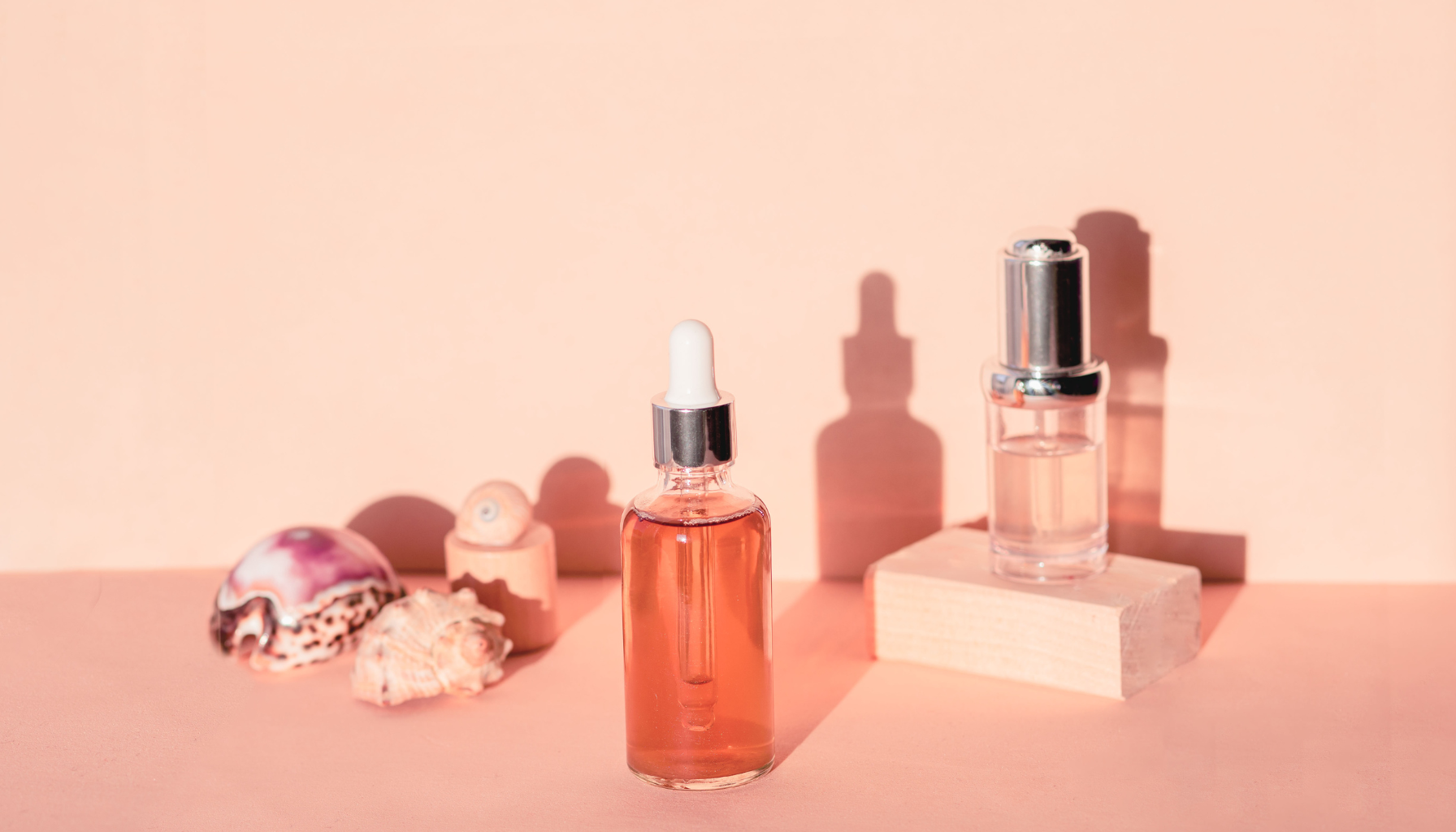I noticed a faint patch of uneven skin on my cheek. It made me feel a bit self-conscious. That’s when I first heard about kojic acid, derived from fermented mushrooms. It’s popular for brightening and evening-out skin tone.
I wanted to add kojic acid to my skincare without changing my routine too much. I learned about its origins and how it targets dark spots. I’m excited to share my journey with you.
Many others have seen the same results. I’m thrilled to help anyone manage hyperpigmentation responsibly.
What is Kojic Acid?
Kojic acid is an ingredient celebrated in the skincare world for its melanin-inhibiting properties. It works by blocking tyrosinase, the enzyme responsible for producing melanin, which is why it’s often used to treat conditions like melasma, sun spots, and acne scars. However, it’s a potent active, meaning it’s essential to use it correctly to avoid irritation.
A 2019 study published in the “Journal of Dermatological Science” reported that kojic acid is particularly effective in treating melasma and age spots.
Why I’m Fascinated by Kojic Acid?
I found out about kojic acid while looking for a solution to dark spots. It’s known for tackling melasma and uneven skin tone. It works by stopping the enzyme that makes melanin.
Studies have shown that kojic acid can reduce melanin production by up to 50% when used consistently over 4-6 weeks.
People say it’s gentle, unlike harsh treatments. This caught my attention.
My own battle with hyperpigmentation made me dive into kojic acid’s science. It seemed to target melanin directly. Its popularity grew because it works well and is safe. This made me hopeful it could brighten my skin.

Kojic Acid Benefits I Love
I love how kojic acid products change my daily routine. Dermatologists say 75% of people see brighter skin and less hyperpigmentation. You might see changes in two weeks, and more in three months.
These products are great for many uses, like soaps and serums. Experts say side effects are rare if used correctly. I feel my skin calm down with gentle formulas, and it glows with regular use.
Brightening Effect
Kojic acid blocks melanin, fading dark spots. Regular use keeps my skin looking bright every day. Dermatologists emphasize pairing kojic acid with SPF, as its melanin-inhibiting properties make skin more vulnerable to UV damage.
Evening Out Skin Tone
Evening out my skin tone was hard until I tried kojic acid. Soaps and creams helped even out my skin. Now, my skin looks balanced and healthy with daily care.
According to dermatologists, kojic acid is often recommended for those with mild to moderate hyperpigmentation but should be used in concentrations between 1% and 4% to minimize the risk of irritation.
How I Chose My First Kojic Acid Product?
I was searching for a product to even out my skin tone. I found that a kojic acid serum was the best choice. It goes deep into the skin. My friends told me about soaps and creams, but I chose a serum for my dry skin.
I read labels carefully. I wanted a product with kojic acid and mild brighteners. This way, I could get gentle but effective results. I learned that kojic acid comes from a fungus used in sake in Japan. It became popular in skincare in the 1980s.
I started using it slowly and watched for any signs of irritation. I knew that using it regularly would make my skin glow. This careful approach helped me find a serum that felt right for me.

How To Add Kojic Acid Into Skincare?
I like to add new products slowly. I focus on finding a balance between results and safety. Korean beauty products often include kojic acid, but they can still irritate my skin if I start too fast.
First, I always do a patch test. This helps me avoid any surprises. I also make sure to use sunscreen with at least SPF 30 when using kojic acid.
Step-by-Step Approach
- Start by cleansing my face with a mild cleanser to clear out any impurities.
- Apply toner if I need extra balance and to prep my skin for active ingredients.
- Use kojic acid items 2-3 times a week, building up usage slowly to prevent dryness.
- Follow with a lightweight moisturizer to seal in hydration.
- Finish with broad-spectrum SPF in the daytime, supporting kojic acid safety.
Checking Product Concentration
I look for products with a moderate concentration. Going too strong can cause redness or a burning sensation. Most products I find cost between $9.95 and $59.00 and have ratings of 4.2 or 3.5. I wait 4-6 weeks to see improvements in my skin tone and dark spots.
My Kojic Acid Application Routine
I start my day with a gentle cleanser before using kojic acid. I use a serum with 1% or less kojic acid. This helps brighten my skin without causing irritation.
Daily use of kojic acid fades dark spots and hyperpigmentation. But, I reduce it to two or three times a week when using alpha or beta hydroxy acids.
Being consistent is important. I saw clearer skin after a few weeks. So, I keep using kojic acid with protective cleansers and moisturizers.
I add it to my routine gradually. Keeping it simple lets each product work better. I end with a broad-spectrum sunscreen to protect my skin from the sun.
Balancing Kojic Acid and Other Active Ingredients
I found that my skin does best when I mix the right exfoliants and brighteners. I use products that work well together but don’t overdo it. This way, I keep my skin calm and my kojic acid use steady.
It’s tempting to mix strong acids with kojic acid, but it can dry out or irritate the skin. I learned to be careful with glycolic or salicylic acid when using kojic acid. K-Beauty experts say it’s about balance. My advice is to focus on one acid at a time.
Working With AHAs and BHAs
I add AHAs and BHAs to my routine, but on different days. This avoids over-exfoliating and lets my skin soak up each ingredient’s benefits. Glycolic acid smooths my skin, while salicylic acid keeps pores clean.
Timing and Layering
Timing is key. I use stronger acids at night and kojic acid in the morning or on alternate evenings. This lets my skin recover and shine without getting overwhelmed.
Test Results and Kojic Acid Safety Tips
I tested a fresh kojic acid serum on a discreet patch near my jawline. A slight tingle appeared, then subsided quickly. My skin showed no lingering redness, which encouraged me to include this active in my routine. Concentrations of up to 1% are considered gentle, though contact dermatitis remains the most common side effect.
I stay mindful of long-term use, since experts warn that it can make skin more vulnerable to sunburn. It is wise to take breaks and monitor changes, especially when using stronger formulas.
Performing a Patch Test
I tap a drop on clean, dry skin behind my ear or on my inner forearm. Mild tingling or brief redness may occur. That reaction typically fades within minutes. If I notice stubborn irritation or a rash, I stop immediately and consider soothing the area with a gentle cream.
When to Seek Professional Advice
Anyone living with rosacea, eczema, or persistent redness should consult a dermatologist before introducing kojic acid. If discomfort continues or worsens, specialized guidance helps determine if this ingredient is still safe to use. Monitoring skin responses is key to a successful experience.
Common Mistakes to Avoid When Incorporating Kojic Acid
I’ve learned some hard lessons with Kojic Acid. One big mistake is using a product with too high a percentage too soon. It might look appealing, but it can cause redness or dryness if your skin isn’t ready.
Another mistake is over-exfoliating. Using harsh exfoliants or too many active products with Kojic Acid can irritate your skin. I like to give my face time to adjust between exfoliation. Also, don’t forget sunscreen because Kojic Acid can make your skin more sensitive to the sun. Using an SPF 30 or higher keeps me safe while enjoying its benefits.
- Read ingredient labels to watch for strong concentrations.
- Start slow and patch test if you’re unsure of your tolerance.
- Resist layering every potent product at once.
- Following these simple steps keeps my skin calm and on track. The U.S., Japan, and India are all using Kojic Acid soaps for brightening. I just make sure to avoid making hasty choices. Slow and steady progress is always better than sudden flare-ups.

Best Practices for Using Kojic Acid
I pay close attention to my skin when using kojic acid. First, I do a patch test to see if there’s any redness or dryness within 24 hours. This helps me catch any issues before I start using it regularly.
Monitoring Skin Reactions
I watch for signs like tingling, flaking, or unexpected bumps. If I notice any discomfort, I cut back to using it once or twice a week. It’s important to be careful, especially when mixing kojic acid with strong ingredients like retinol, as it can make skin more sensitive.
Maintaining Consistency
Using daily sunscreen is crucial. I try to keep kojic acid in my routine consistently. Skipping it too often might mean missing out on its brightening effects. Koji White skincare products help me manage dark spots, but I also check in with a dermatologist if I have any concerns.
- Use smaller amounts at first
- Be attentive to discomfort
- Introduce new products slowly
- Stay diligent with sunscreen
Final Thoughts
Adding kojic acid into my skincare routine has been a fantastic way to brighten my complexion and tackle pigmentation issues. With the right approach and a bit of patience, I was able to unlock its full potential for radiant, healthy-looking skin.
Every person’s skin is different, so I recommend listening to your skin and adjusting your routine as needed.
Have you tried kojic acid before? I’d love to hear about your experiences or answer any questions you might have!
Frequently Asked Questions
Q: Can kojic acid be used daily?
A: Yes, but it’s best to start slow. Begin with 1-2 times a week and gradually increase to daily use if your skin tolerates it well.
Q: Does kojic acid work for all skin tones?
A: Yes, kojic acid is effective for all skin tones and types in addressing pigmentation issues.
Q: Can kojic acid be used during pregnancy?
A: Pregnant individuals should consult their dermatologist or healthcare provider before using kojic acid.
Q: Are there side effects to using kojic acid?
A: Some people may experience dryness, redness, or mild irritation. Always do a patch test and pair kojic acid with hydrating and soothing products.

